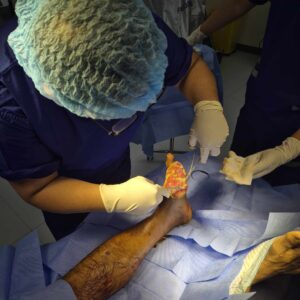Every athlete, whether a professional or a weekend warrior, understands the frustration that comes with sports injuries. From sudden sprains to chronic tendonitis, these injuries can halt progress and sideline your fitness goals. The key to a successful comeback lies not just in rest but in timely and effective sports injury rehab & treatment tailored to your needs. This article explores everything you need to know about sports injury recovery, why early intervention is critical, and how evidence-based therapy can help you return stronger than ever.
Understanding Sports Injuries: What Athletes Face
Sports injuries come in many forms, each with unique challenges. Common injuries include:
- Sprains and Strains: Overstretching or tearing ligaments and muscles, often affecting ankles, knees, and wrists.
- Fractures: Broken bones caused by trauma or overuse.
- Tendonitis: Inflammation of tendons due to repetitive motion or overload.
- Dislocations: When bones are forced out of their normal position.
These injuries result from a variety of causes such as overuse, improper technique, inadequate warm-up, or accidental trauma. Understanding the specific injury you’re facing is crucial to determining the right path to recovery.
The Importance of Immediate Rehabilitation
One of the most important factors in effective sports injury rehab & treatment is beginning rehabilitation as soon as possible. Early intervention helps prevent complications such as chronic pain, reduced mobility, and prolonged recovery time. Depending on the injury’s severity and your overall health history, a tailored approach can be developed that may also include referrals to specialists if necessary.
Delaying rehab often leads to muscle weakness, joint stiffness, and scar tissue buildup, which can significantly impede your return to peak performance. Starting treatment early maximizes your chances for a full recovery.
Evidence-Based Treatment Options That Work
Modern sports injury rehab focuses on evidence-based therapies, ensuring treatments are supported by clinical research and proven results. Some of the most effective treatment methods include:
Manual Therapy: Hands-on techniques that improve joint mobility, reduce pain, and enhance circulation.
Therapeutic Exercises: Customized workouts aimed at restoring strength, flexibility, and coordination.
Dry Needling: A minimally invasive technique to relieve muscle tightness and improve healing.
Osteopractic Therapy: Specialized manipulation and movement strategies designed to promote optimal joint function and tissue healing.
Each treatment plan is tailored specifically for the individual, addressing the unique aspects of their injury and fitness goals.
Customized Treatment Plans at Osteopractic Physical Therapy of Central Indiana
At Osteopractic Physical Therapy of Central Indiana, the focus is on personalized care. Whether you’re a full-time athlete or someone who plays sports on the weekends, you’ll receive a thorough assessment to determine the best course of action for your recovery.
Our team works closely with each patient to design rehab programs that target the root cause of the injury, not just the symptoms. We use a blend of manual therapy, therapeutic exercises, and osteopractic techniques to speed up healing and improve function.
Many patients have experienced life-changing results, regaining strength and mobility faster than they thought possible. Testimonials reflect our commitment to helping you meet your fitness goals safely and efficiently.
Tips to Prevent Sports Injuries
Prevention is just as important as treatment. Implementing a few key practices can drastically reduce your risk of injury:
Proper Warm-Up and Cool-Down: Spending 10-15 minutes before and after your activity on dynamic stretches and light cardio prepares muscles and joints for exertion and aids recovery.
Strength and Flexibility Training: Balanced muscle strength and flexibility help support joints and reduce strain during activity. Focus on core, lower body, and sport-specific muscles.
Use Proper Technique and Equipment: Learning correct movement patterns and wearing the right gear can prevent many common injuries.
Listen to Your Body: Don’t ignore pain or discomfort—early rest and evaluation can stop a minor injury from worsening.
By integrating these habits into your routine, you support long-term athletic performance and health.
Takeaway
Effective sports injury rehab & treatment requires more than rest—it needs a proactive approach based on timely intervention and evidence-based care. Whether you’re a competitive athlete or someone who loves weekend sports, addressing injuries early and following a customized rehab plan ensures you recover fully and return to the activities you love.
If you’re dealing with a sports injury or want to learn more about injury prevention and treatment, reach out to Osteopractic Physical Therapy of Central Indiana. Our expert team is dedicated to helping you regain strength, mobility, and confidence—so you can keep pushing your limits.






